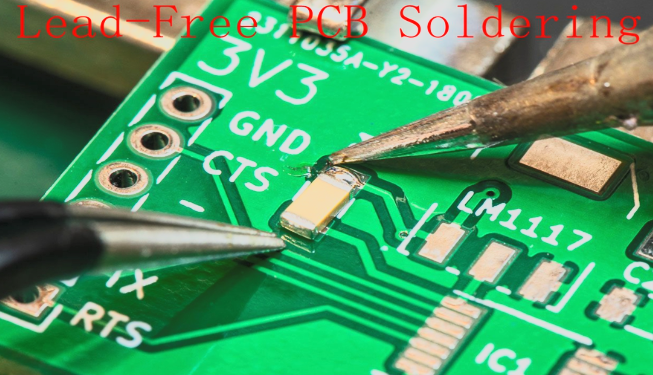Prototype PCB assembly is one of the most crucial stages in electronic product development. It serves as the bridge between design and mass production, allowing engineers to verify circuit performance, identify potential flaws, and make design refinements before committing to full-scale manufacturing. A well-executed prototype ensures that a product will function correctly, efficiently, and reliably once it reaches the market.
In today’s fast-paced electronics industry, companies rely heavily on prototype PCB assembly to accelerate innovation and reduce time-to-market. By quickly transforming digital schematics into tangible boards, manufacturers can test real-world functionality, validate component choices, and optimise layouts for better electrical performance.
The Purpose of Prototype PCB Assembly
The main goal of prototype PCB assembly is to evaluate the design’s functionality and performance in a real-world environment. Before producing thousands of units, manufacturers need to confirm that the circuit works as intended. This stage helps detect design errors, soldering issues, and component mismatches that could lead to costly production delays.
Prototyping also provides engineers the flexibility to experiment with alternative materials, PCB stack-ups, and component placements. This early testing ensures better thermal management, signal integrity, and mechanical strength, depending on the product’s intended use. Whether it’s a medical device, industrial control unit, or consumer gadget, a functional prototype is the foundation for reliable and safe final production.
The Process of Prototype PCB Assembly
Creating a prototype PCB involves several detailed steps that require precision and expertise.
Design and File Preparation
The process begins with a detailed review of design files such as Gerber data, bill of materials (BOM), and pick-and-place lists. These files guide the assembler in understanding component specifications, hole sizes, copper layer alignment, and overall layout.
PCB Fabrication
Once designs are approved, the bare PCB is fabricated using materials that match the required specifications — typically FR4, aluminium, or high-frequency laminates for specialised applications. The fabrication step defines the copper traces, vias, and layers that will interconnect electronic components.
Component Procurement and Inspection
In prototype PCB assembly, sourcing quality components is critical. Even a single faulty resistor or capacitor can compromise the entire test cycle. Components are inspected for authenticity, packaging quality, and compatibility before placement.
Assembly and Soldering
Depending on the design, the board may involve Surface Mount Technology (SMT), Through-Hole Technology (THT), or a hybrid of both. Automated pick-and-place machines position SMT components with precision, followed by reflow soldering, which secures them to the board. Through-hole components, on the other hand, are manually inserted and wave-soldered to ensure durability.
Inspection and Testing
Every prototype goes through extensive quality checks, including Automated Optical Inspection (AOI) and X-ray analysis for multilayer or complex boards. Functional testing follows, verifying that the assembled prototype performs according to specifications. These tests help identify open circuits, shorts, or component misplacements.
Importance of Prototype PCB Assembly in Product Development
Skipping the prototype stage can be a costly mistake. Prototype PCB assembly provides invaluable insights into product behaviour, manufacturability, and user experience. Here’s why it’s essential:
Minimises Design Flaws
Prototypes help engineers identify potential errors early in the design phase, reducing rework and saving time in large-scale production.
Improves Product Quality
Testing prototype boards allows teams to validate performance parameters such as power efficiency, temperature tolerance, and signal clarity.
Reduces Costs
Early detection of design or component issues prevents expensive rework once production has started, significantly lowering overall project costs.
Speeds Up Time-to-Market
With efficient prototype assembly, companies can iterate faster, moving from concept to finished product in shorter cycles.
Enhances Communication Between Teams
Prototype PCBs provide tangible models that help design, engineering, and manufacturing teams collaborate more effectively during the development process.
Applications of Prototype PCB Assembly
Prototype PCB assembly is used across a wide range of industries, including:
- Consumer Electronics: Testing new gadget designs before launch.
- Automotive Systems: Evaluating control modules, sensors, and infotainment systems.
- Medical Devices: Ensuring safety and reliability of diagnostic and monitoring equipment.
- Telecommunications: Testing routers, signal processors, and data transmission circuits.
- Aerospace and Defence: Validating high-reliability electronics used in navigation and communication.
Each sector demands specific testing and compliance requirements, and prototypes make it possible to verify these standards in controlled environments.
Advancements in Prototype PCB Assembly Technology
Modern technology has transformed how prototype PCB assemblies are produced. Rapid prototyping tools, 3D printing, and automated assembly lines have made the process faster and more accurate than ever before. Manufacturers now offer same-day or next-day prototype services, helping businesses maintain a competitive edge.
Additionally, simulation software integrated with assembly tools allows engineers to predict performance outcomes before physical fabrication. This combination of virtual and real-world testing reduces the number of iterations required to achieve the perfect design.
Why Quality Matters in Prototype PCB Assembly
Even though prototypes are produced in small quantities, they must adhere to strict quality standards. High-quality assembly ensures that the prototype accurately reflects how the final product will perform. Any defects at this stage can lead to incorrect assumptions and wasted development time.
Therefore, partnering with an experienced manufacturer that follows international standards like IPC-A-610 and ISO 9001 is vital. These standards ensure precision, consistency, and reliability across all prototypes and production runs.
Conclusion
Prototype PCB assembly plays an indispensable role in bringing innovative electronic products to life. It allows engineers to validate designs, test component functionality, and refine product performance before mass production begins. By investing in reliable prototype assembly, companies can reduce risks, cut costs, and accelerate product launches.
For the best results, it’s essential to collaborate with a trusted PCB assembly company that offers complete prototyping solutions — from design validation and material sourcing to assembly and functional testing. A skilled partner will help you transform your ideas into high-quality, production-ready PCBs that meet performance, reliability, and market demands.









